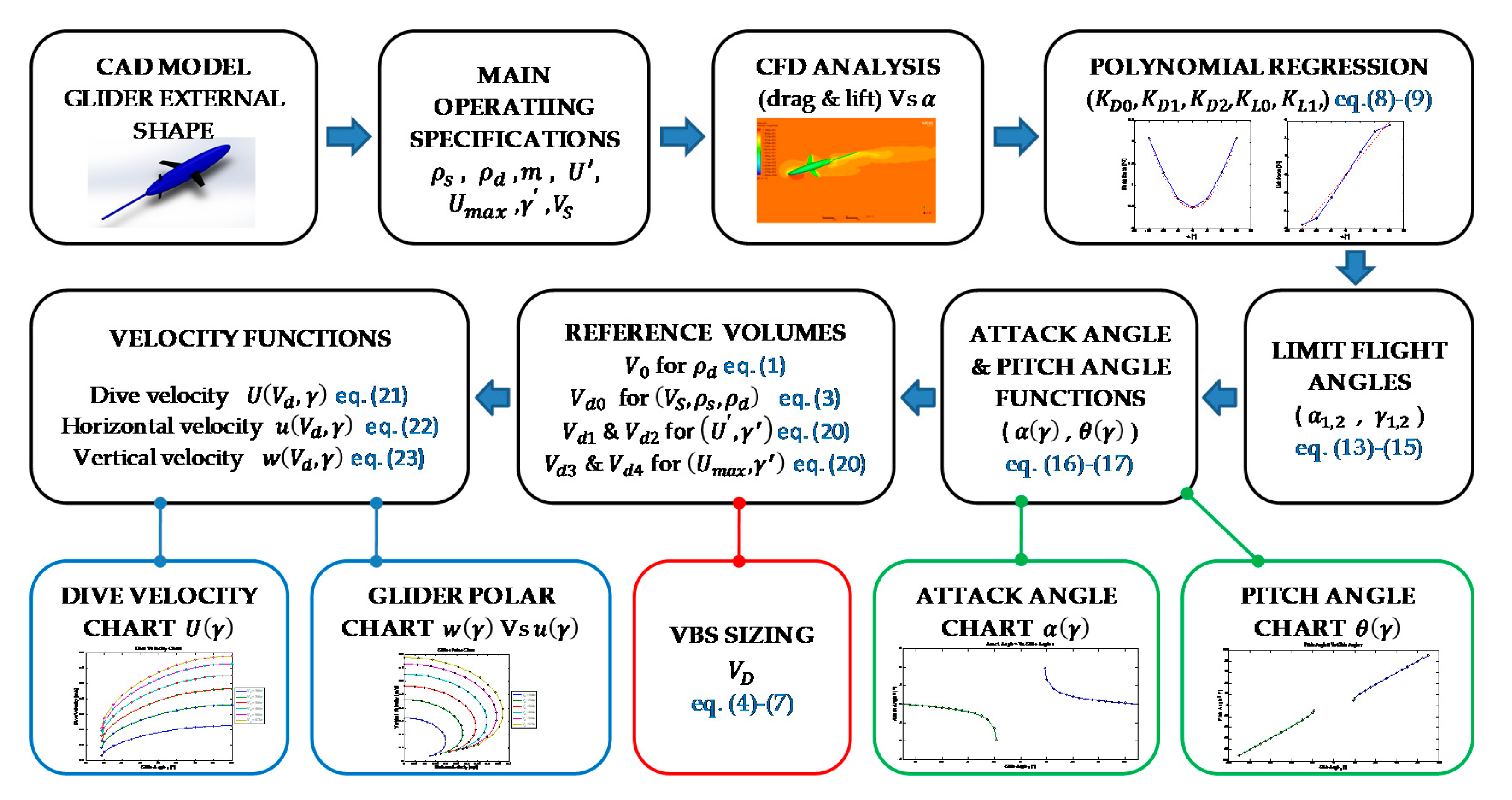Authors: Juan Pablo Orozco-Muñiz, Tomas Salgado-Jimenez and Noe Amir Rodriguez-Olivares
https://doi.org/10.3390/jmse8110919
Abstract
The Variable Buoyancy System (VBS) is a critical device in the operation of underwater gliders that should be properly sized to achieve the required vehicle propulsion; safety within the operating range; and adequate efficiency at the nominal depth rating. The VBS budget volume depends mainly on the glider hydrodynamics and the main operating states of the vehicle. A method is proposed with analytical equations to analyze the performance of underwater gliders and to estimate the resultant velocities of the vehicle as a function of the buoyancy change and the glider angle. The method is validated to analyze the glider performance of underwater gliders and is essential to get the main design requirement for the propulsion system: the VBS budget volume. The paper presents the application of the method to obtain the VBS sizing for an academic glider; a comparison with the historical hydrodynamic data of the Slocum glider; the results of the glider performance study; and the development of the characteristic charts necessary to evaluate the performance of the vehicle and its flight parameters.
Keywords: variable buoyancy system; glider polar chart; glider performance; angle of attack; underwater gliders; specific energy consumption



Recent Comments